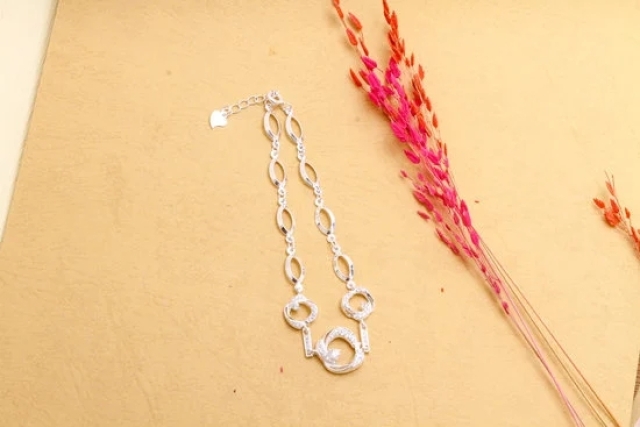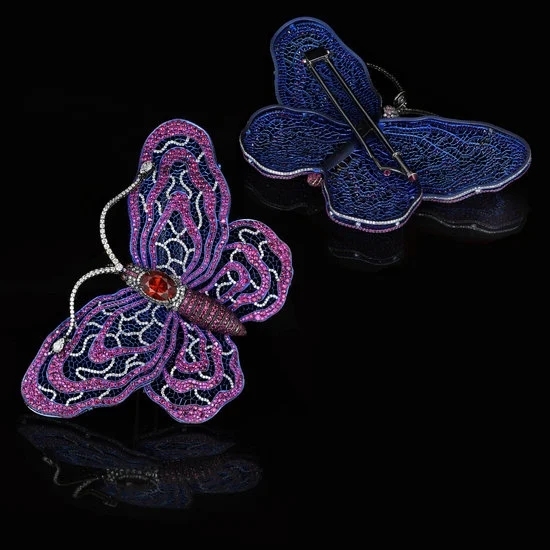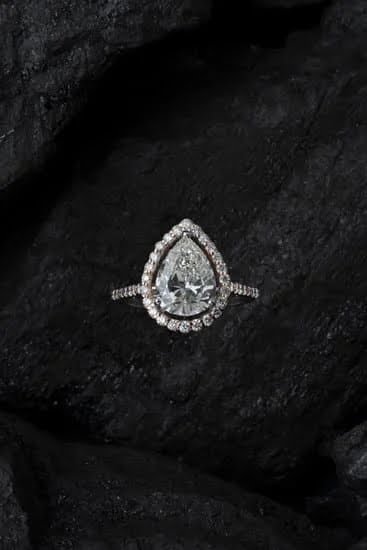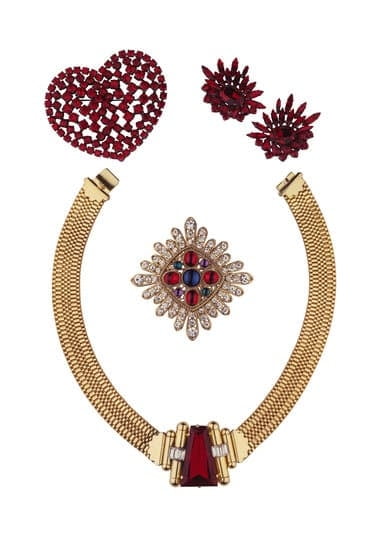Making metal jewelry charms is an exciting craft that allows a person to create unique accessories for a variety of projects. Whether planning to mass-produce professional pieces or just wanting something fun and personalized, understanding the basic tools, techniques, and processes can make it easy to get started.
Materials Needed To Make Metal Jewelry Charms:
First and foremost, you will need metal of some kind; ALMOST any type of metal can be used in making jewelry charms including copper, brass, steel or silver. You can buy these metals in pre-cut circles or use pliers to shape your own cut from sheet metal. You could also use old watches with moving cogs as the base for your charm. Once you have chosen the type of metal you are ready to move on to design.
Designing & Fabricating The Charm:
Designing the jewelry charm is one of the most fun elements when it comes to do-it-yourself projects like this one. Create illustrations using color pencils if preferred on paper first then transfer onto the corresponding base circle cut out from metal sheets before beginning fabrication work.
Next you are ready to start forming your structure; soldering welders are generally used by professionals in these types of projects but alternatively rivets and screws provide sturdy fastening options too which may work better for beginners who may be uncomfortable working with a flame.
When your structure is secured properly you can then begin adding decorative details such as beads, colorful threads or ribbons etc depending on what appeals to you most aesthetically when it comes to giving form and shape to your charmed piece of jewelry artistry.
If adding text or words: Punch stamp sets come very useful here, with a hammer tap lightly each letter indentation clearly stamped onto metallic structures so that they appear readable once varnished and painted at end processes of production.
Lastly finish off polishing for glossy shimmery looks (paint optional).
Gather the Supplies For Making Metal Jewelry Charms
Once you have gathered the supplies necessary to make metal jewelry charms, you are ready to start the process. For metal charms, you will need sheet or wire metal, pliers, a saw or other cutting tool (for cutting shapes from sheet metal), a surface such as an anvil for hammering and flattening the metal into shape, a soldering station with torch and flux, jump rings for connecting a charm to clasp and any embellishments such as beads or stones.
Begin by choosing the design of your charm. This may be something abstract and original that you think of yourself, or perhaps it is a classic design of jewelry like a heart or sunburst.
Once you have imagined your charm in its entirety, use either sheet metal stock or wire to form it into shape. If starting with a wire, use pliers to form coils and curves to your desired outline or sketch out a plan on paper first if preferred.
Step-By-Step Guide to Making Metal Jewelry Charms
Metal jewelry charms are a great way for anyone to personalize their jewelry. They can be made in almost any shape imaginable, from intricate spirals and flowers to simple geometric patterns. Making metal charms requires some basic knowledge of working with metal, but it is a relatively easy process that even novice craft-makers can try. This guide will provide step-by-step instructions on how to make metal charms for your own unique accessory pieces.
First, decide on the shape you want your charm to be. If you’re not sure what kind of shape you want, start by sketching out some ideas until you find one that appeals to you. Once you’ve decided on a design, use calipers or a ruler to measure all necessary dimensions for your charm’s length, width, and depth. This is important because it helps determine which size sheet of metal you’ll need for the project.
After measuring and deciding upon the size of metal needed, buy the appropriate material – either brass or silver – at your local hardware store or craft shop. Once the metal is cut into the desired shape (this will usually need to be done by a professional engraver), buff the edges with and 400 grit sandpaper to achieve a smoother surface if desired. You can also add texture using embossing tools if desired.
Next, bring out your creativity. You can use stamps and dyes on the charm’s surface in order to show off patterns such as swirls or circles or attach beads in different colors and sizes for added visual interest. If soldering is something you’d like to explore further, use an appropriate soldering kit (and heat gun.)
when attaching these pre-made beads onto your charm’s surface once it has been finished and polished according to preference using 400 grit sandpaper again before attaching its wire components onto each side of the charm so that it may later be hung as an appropriate choice of jewelry.
Finally, coat the charm with lacquer for extra shine and protection if desired; this will help ensure its quality for longer periods of time without fading away or deteriorating quickly due to exposure to weather elements over time.
Soldering Techniques for Making Metal Jewelry Charms
Metal jewelry charms can be quite eye-catching and make a great addition to any look. One of the most popular methods for making metal jewelry charms is soldering, which will give you a much more precise finish with your jewelry pieces.
To begin with soldering when making metal jewelry charms, start by putting on protective eyewear and gathering the materials you’ll need such as solder, flux, silver, wire cutters, soldering pick or tweezers, a charcoal block or brick, aiming powder/boric acid/sal ammoniac powder, metal file and safety measures such as gloves.
The next step is to clean off the surfaces of the metal and put your design together. Begin by using a wire cutter to cut thin strips of silver out of sheet or flat gold or silver stock (based on what type of charm you’d like). If needed while designing your charms solder jump rings to attach solid pieces together such as clasps onto chains.
When all pieces are in place it’s time to move onto soldering. Start by coating each piece being joined with flux-this helps prevent oxidation from occurring during soldering-using a fine tipped brush. Make sure that they are all clean before moving onto the next step.
Once everything is ready for assembly, use a tweezer or soldering pick to add small amounts of solder on each joint before proceeding to heat them up using aimed heat torch. Move slowly around each joint until proper fusion takes place; making sure that all sides are heated evenly so that they join evenly. Once complete allow the metal to cool off completely before cleaning up any excess made during soldering with a file and wet cloth.
With everything cleaned up properly it’s now time for polishing. You can polish it quickly with a buffing wheel if you have one or spend some extra time hand polishing using metal polishes for an even brighter finish. After completing these steps the charm should be ready for wearing – congratulations.
Finishing Techniques for Making Metal Jewelry Charms
Making metal jewelry charms can be a fun and creative activity. It’s also an opportunity to express yourself through unique creations. There are many different techniques you can use to create these types of pieces, depending on your skill level and preferred material.
One popular technique is working with sheet metal, which allows you to get more intricate details into your designs. In order to create the design from sheet metal, you will need to cut out the shape with snips or a jewelers saw then shape it using pliers and other tools such as files.
Once the shape is complete, there are several finishing techniques that can be used to bring out the jewelry charm’s final look. One method you may want to try is polishing the charm with steel wool or a buffing wheel before applying a coating of protective wax.
This will help preserve the metal and give it an additional shine that will make it truly stand out when fastened onto a necklace or other accessory. You may also consider accenting your pieces by adding small beads along its edges or placing tiny crystals overtop for added sparkle.
Painting is another way to add some color and interest into your jewelry creations. You could try using metallic paints like copper rust or black patina for a more aged look, or clear lacquer to bring out visual texture within certain areas of the design.
Additionally, if stamping words into your pieces is something that interests you, metal stamps can be used with different types of hammers to transfer lettering onto steel sheets in less than five minutes. Alternatively, if you would prefer a classic silver surface finish then you could opt for moving toward electroplating for a longer-lasting finish with brilliant reflections that won’t tarnish over time.
No matter which finishing methods you decide to try for making metal jewelry charms, it’s important that they all come together neatly and symmetrically in order for your final creation to look balanced and polished. Working carefully yet efficiently together these various techniques will ensure that each one of your handmade pieces turns out just as unique as they first began during their conception.
Different Types of Metal to Use for Making Jewelry Charms
Making metal jewelry charms is easy with some basic knowledge of techniques. Metal jewelry charms can be fashioned from nearly any type of metal, depending on the desired look and feel. Silver is a popular choice for its bright color and polished finish.
Copper is another option which gives a more subdued and aged look. Brass is especially trendy due to its ability to develop a patina over time that gives it even more character than traditional silver or copper options. Sterling silver is an excellent long-term option as it does not tarnish like many other metals, but still has the shimmer and shine associated with high-end metals.
Jewelers can create charms out of sheet metal by cutting out desired shapes such as circles, squares, triangles, hearts or even stars almost any shape imaginable using paper cut-outs as templates. After removing undesirable material with utility tools like shears and snips, jewelers will smooth away imperfections through filing before moving on to forming if desired by hammering or annealing the metal into the preferred form while making sure not to damage the integrity of the design in process.
Once shapes have been formed from sheet metal they can then be strung on individual jump rings and hung on necklaces or bracelets as charms or pendants. A flame kiln can also be used to mold sheet metal into three-dimensional shapes such as animals or other figure designs allowing for some additional creativity when it comes to creating unique tokens your customers may have never seen before.
Charms fashioned this way are usually left with natural highlights giving them a handmade touch that’s sure to stand out from factory-made products offered elsewhere in stores around town.
Texturing and Polishing Techniques for Making Metal Jewelry Charms
Making metal jewelry charms can be an enjoyable hobby, and one that can lead to a great side business if done correctly. One of the most important elements of making metal charms is properly texturing and polishing. Texturing involves creating various patterns in the metal that gives the charm its own unique look. The two main types of texturing are etching and stamping.
Etching involves using acids or chemically made solutions to create patterns in the metal’s surface. Stamping, however, requires more manual effort as it consists of physically pressing a stamp made for the purpose into the metal. Once you have achieved your desired texture, you can polish your charm until it has a mirror-like shine.
When polishing a charm, there are multiple techniques which depend on what type of metal was used to make it and how intricate the texture is. For softer metals such as silver or copper, chemical polishing compounds like rouge or tripoli work best. When using these compounds, apply them directly onto the surface with soft cloths such as cotton flannel or muslin and then repeatedly buff with pressure until you achieve your desired finish.
For tougher metals such as steel or iron, electric powered tools known as wheel buffers are recommended since they offer more control and direction when polishing. Wheel buffers use cotton mops called buffs which are applied onto motorized wheels at varying speeds to press against the surface of the piece providing smoother finishes than manual/chemical methods alone while also aiding in removing oxidation from surface blemishes if necessary.
No matter if you plan on making your own line of jewelry charms to sell or just simply want to add some unique pieces to your collection, having an understanding of basic texturing/polishing method will help immensely when working with metals for jewelry purposes. With practice and patience, each charm can become something beautiful that you just might be proud enough to share with others.
Adding Color Elements to Metal Jewelry Charms
Adding color to metal jewelry charms is an essential part of the craft that can transform your dull creations into attractive and eye-catching accessories. There are many ways to add color elements to metal charms, with the most common being enamel paints and wire wrapping techniques.
Enamel paints are a great option if you want to create designs or patterns on your pieces; they come in different strengths from permanent colors that will not fade or bleed to temporary ones that can be removed easily. Wire wrapping is used when you need multiple colors on one charm, creating depth and dimension by wrapping colored wires around each other.
If you prefer more subtle coloring techniques, plating can also be employed. Plating involves applying a thin layer of metal ions over a jewelry charm which then binds together with the base material and thus colors the charm.
It has become increasingly popular recently as it offers fast, budget friendly color options with no mess involved. Plated charms tend to last longer than those painted in enamels since any additional paint applied afterwards are only covering up cracks and mistakes rather than bonding between layers of metal ions.
Finally, patina can also be used to add color elements to metal jewelry charms; this technique requires lot of skill and experience as it’s quite fragile but creates an organic look on the surface of your piece that is remarkably beautiful. Patina solutions consist of salts, acids or oxides which react with metals differently depending on their purity forming dark spots or lines over a few moments after being exposed.
Depending on what kind of patina solution you use, effects such as copper greens, yellowish browns, redish oranges or even black could be achieved – always make sure to practice safety precautions when using such corrosive substances.
Tips and Tricks for Making Metal Jewelry Charms
Creating metal jewelry charms is an enjoyable and creative hobby enjoyed by many. Despite the intimidating appearance of some more advanced charm designs, anyone can make a basic metal charm with just a few tools and supplies-no special expertise or know-how required. Here is a breakdown of how to get started in making metal charms:
First, purchase or gather the necessary supplies and tools. This will include jewelry clasps, headpins, pliers, jumprings, wire cutters and softened metals such as brass or copper. Finally you should also select any decorations or baubles that will be added on for decoration.
Before creating your charm you need to understand the structure it will have. You can visualize it to have three parts: the main body (or mesh) of the charm; a connection part (which allows for attachment); and an extra decoration part (optional). These components are essential for constructing your charm.
Once visualized and all the necessary materials are acquired it is time to begin hammering your base metal into shape. Start by cutting out two circles from the softened metal you purchased earlier. Hammer the pieces together afterward so they are joined permanently in place. The resulting piece should form a rounded disc at this point; this is your starting point for creating a basic charm design.
Additionally use simple decorative techniques such as texturing or embossing which will give the final product an aesthetically pleasing texture and design element that will set it apart from standard pieces of jewelry charm designs on Pinterest or Etsy. To add a jumpring attach pliers to one side of each end of steel wire creating an eye-catching double looped circle pattern along its length when viewed from above.
Then slide any additional decorative beads onto half-round headpin strands prior to adding them onto alternating loops with jumprings. Finally connect any other dangling chains or necklaces products using adhesives if desired , your charm is ready for display.
Different Presentation Options for Metal Jewelry Charms
Pre-made components like metal jewelry charms are an easy and affordable way to give your jewelry creations a professional look. Most metal charms come in a variety of motifs and themes, making them perfect due to their versatility for creating anything from casual pieces to formal jewelry. Crafting with metal charms can be tricky at first, but once you get the hang of it you’ll be the envy of your crafting circle in no time.
When making jewelry with charms, consider using other components as well. Beads, chains, and findings such as headpins and ear wires are all great ways to customize your charms and set it apart from the crowd.
You could even make key rings or necklaces depending on the type of charm you choose. As far as presentation goes, there are many options available – whether it’s displaying a single charm on a necklace or bracelet wire or creating an elaborate mix of chain links and beads that highlight the beauty of each component individually.
If you want something more unique, consider pairing different charms together for maximum impact. Crafting multiple strands with various lengths will also create visual illusion that will make your piece truly one-of-a-kind. To add more texture and dimension to your creation, use flat pieces like stamping blanks or washers in place of traditional round beads or findings. This will give the piece depth without taking away from its design integrity.
Lastly, don’t forget about adding enamel paint products for some extra flare. Try painting individual links on the charm or even dabbing just highlights along selected parts to accentuate them. With a little bit of creativity and skill you can produce stunningly crafted pieces that will make any wearer proud.
Safety Precautions for Working with Metal Jewelry Charms
Safety is of the utmost importance when working with metal jewelry charms. It is important to keep oneself protected when learning to make metal jewelry. The specific safety considerations vary depending on the type of tool and material used to make a jewelry charm, so it is important to research and study each individual product before attempting to create a DIY charm.
When starting out, it’s a good idea to always wear safety glasses and gloves to protect the eyes and hands from potential hazardous materials. Additionally, take precautions while handling sharp tools by wearing thick leather gloves and long sleeves as well as securing any loose clothing or hair away from operation areas when working with tools such as hammers or saws.
When creating smaller pieces, items like tweezers or needle nose pliers may be used but regardless of size care should also be taken in regards to dust and chemical adhesives. A face mask specifically designed for dust protection should be worn whenever grinding down pieces of metal or soldering components together.
Using proper ventilation and ensuring there are no sparks present that could potentially cause an open flame make sure you have ample filamentation available while soldering. Additionally, never solder without monitoring the temperature levels at all times since overheating can cause burns as well as damaging the workpiece itself. Having an understanding of how each process works will help ensure that safety precautions are followed thoroughly during each step of making metal jewelry charms.
Conclusion
Making metal jewelry charms is a great project to explore the creative possibilities of working with metals. With the right tools, knowledge, and effort, anyone can make their own items for personal use or selling.
To get started, make sure you have the supplies necessary to create beautiful pieces. Pick out a variety of metals and alloys to work with such as gold, silver, copper, brass, and aluminum.
Secure all of your materials including saws blades for cutting the metals into pieces, files for smoothing edges down, and forming tools like hammers or metal block stamps to shape shapes. You’ll also need flux to help with soldering if you choose to assemble different components together.
You could explore more advanced techniques such as electrodepositioning or lost-wax casting depending on what look you are trying to achieve. For techniques that utilize electrical current or involve heating waxes you’ll need specialized equipment like kilns or power supplies used for electrodepositioning that will allow you to produce three dimensional shapes and textures more quickly without having to melt metal directly from solid form into liquid form using intense heat.
When creating any kind of metal jewelry charms remember there is no one-size-fits-all solution so don’t be afraid to experiment. Take your time on each piece and go through small changes in order to reach a satisfying result. Have fun during the process making mistakes part of your learning experience. With practice you will soon become proficient in silversmithing and open up an entirely new realm of ideas on how to bring life into static objects.

Welcome to my jewelry blog! My name is Sarah and I am the owner of this blog.
I love making jewelry and sharing my creations with others.
So whether you’re someone who loves wearing jewelry yourself or simply enjoys learning about it, be sure to check out my blog for insightful posts on everything related to this exciting topic!





